| Description | Participants | Summaries | Products |
|---|
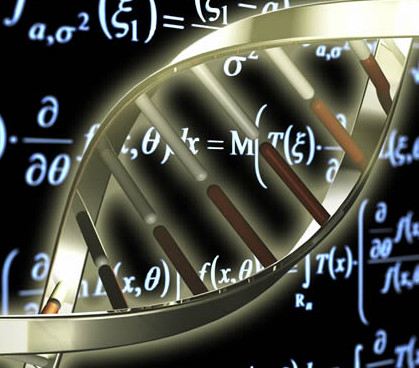
Archived NIMBioS Working Group
Teaching Quantitative Bio
Topic: An Instructional Model for Quantitative Biology
Meeting dates: October 22-24, 2015; March 24-26, 2016; October 6-8, 2016; May 11-13, 2017
Organizers:
Carrie Diaz Eaton, Mathematics, Unity College
Sam Donovan, Biology, Univ. of Pittsburgh
M. Drew LaMar, Biology, College of William and Mary
Kristin Jenkins, Director, BioQUEST
Objectives: Mathematical, computational, statistical and other quantitative approaches continue to redefine modern biological research strategies. Disciplinary norms, practices, and languages can act as barriers to effective interdisciplinary collaboration, and in particular present additional challenges to students attempting to transfer skills across disciplines. This working group will bring together representatives of diverse quantitative and biological education communities to develop an instructional model that supports the integration of quantitative and biological problem solving practices. An instructional model that effectively integrates quantitative reasoning and biological problem solving will involve several interrelated steps. First, students must be able to characterize a biological problem by "mathematizing" important features of the problem. Next, they must be able to identify the appropriate quantitative tools and strategies to set up and carry out a meaningful quantitative analysis. Finally, they must successfully reconnect their quantitative analysis to the original biological problem in a way that demonstrates their understanding of the knowledge gained and how it applies to a rich biological context. The goal of this instructional model is to provide an accessible framework for integrating broad types of biological reasoning with diverse quantitative disciplinary skills. By bridging mathematical, computational, statistical and other quantitative approaches with biological problem solving, this instructional model acts as a resource for developing, evaluating, modifying, and implementing instructional materials across the biological and quantitative spectrum.
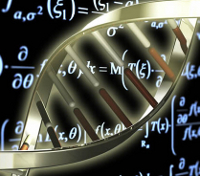
Meeting Summaries
| Mtg # | Dates | Agenda | Summary | Photo | Evaluation |
|---|---|---|---|---|---|
| 1 | Oct 22-24, 2015 | Link | Link | Report | |
| 2 | Mar 24-26, 2016 | Link | Link | ||
| 3 | Oct 6-8, 2016 | Link | Link | ||
| 4 | May 11-13, 2017 | Link |
Meeting 1 Summary. The goal of the first meeting was to identify how to support biology faculty in teaching quantitative biology. The group settled on modeling because of its key role in scientific research, the potential to engage students in authentic scientific experiences and the strong quantitative aspect. Group members were interested in conducting research on modeling in the undergraduate biology classroom to better understand the issues and challenges including translational issues between math and biology, learning progressions, and professional development. A great deal of educational and philosophical research has been dedicated to modeling, so our next step is to become more familiar with the existing literature and identify appropriate next steps.
Meeting 2 Summary. Second meeting goals were to outline a paper on modeling in biology education and to discuss the goals, timeline and group participation in the larger research project. As a result of our literature review, we were able to develop a coherent message about the role of modeling in biology education, identify audiences, and potential publishing outlets. The group is working on two papers: one for mathematics faculty and another for biology faculty. The main goal at this stage is to provide an overview of modeling in the classroom, highlighting the education value, and providing examples of good practice in teaching with models. Dauer and Mayes shared the outline of their research project, which will extend current educational research on quantitative learning progressions to the undergraduate level by focusing on cognitive and affective impacts of using models in the classroom.
Meeting 3 Summary. This group continues to work on the problem of using models in the undergraduate biology classroom to enhance student understanding of biological concepts as well as the process of science, critical thinking and quantitative skills. There are many disciplinary and pedagogical barriers to effective use of quantitative models in biology, and our goal is to promote the idea and suggest some approaches. To this end, we have written one paper on modeling in the undergraduate classroom for mathematics faculty and we are working on a second paper for biology faculty. In addition, we are working on a research project exploring the learning progression of quantitative reasoning skills at the undergraduate level.
Meeting 4 Summary. The "Unpacking the Black Box" Working Group addressed the challenge of using models and modeling to enhance undergraduate students' understanding of biological concepts as well as the process of science, critical thinking and quantitative skills. There are many disciplinary and pedagogical barriers to effective use of models, and particularly quantitative models, in biology classrooms. In this Working Group, we conducted a survey of the education research on models in education and combined this with the experience of the mathematics and biology educators in the group to develop practical and effective approaches to using models in biology education. Based on this, we have developed a practical approach and suggestions for classroom implementation that we feel will resonate with faculty. We have written one paper on modeling in the undergraduate classroom for mathematics faculty, and we are working on a second paper for biology faculty. In addition, a subset of the group is working on a research project exploring the learning progression of quantitative modeling skills at the undergraduate level.
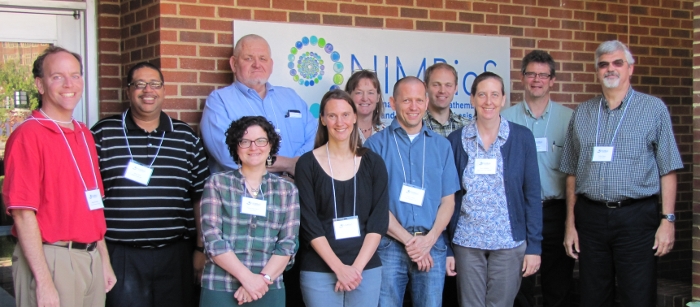 |
| Mtg. 1 participants (L to R): Richard Schugart, Gregory D. Goins, Carrie Diaz Eaton, John Jungck, Melissa Aikens, Kristin Jenkins, Michael Drew LaMar, Joe Dauer, Kam Dahlquist, Sam Donovan, Robert Mayes. |
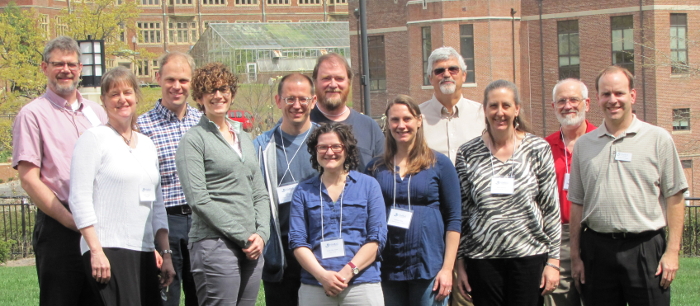 |
| Mtg. 2 participants (L to R): Sam Donovan, Kristin Jenkins, Joe Dauer, Hannah Callender, Michael Drew LaMar, Ben Fitzpatrick, Carrie Diaz Eaton, Melissa Aikens, Robert Mayes, Kam Dahlquist, Glenn Ledder, Richard Schugart |
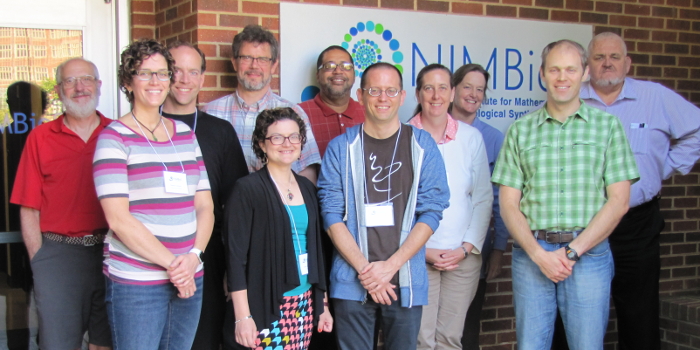 |
| Mtg. 3 participants. Back row (L to R): Glenn Ledder, Richard Schugart, Sam Donovan, Gregory Goins, Kam Dahlquist, Kristin Jenkins, Joe Dauer, John Jungck. Front row (L to R): Hannah Callender, Carrie Diaz Eaton, Michael Drew LaMar. |
NIMBioS Working Groups are chosen to focus on major scientific questions at the interface between biology and mathematics. NIMBioS is particularly interested in questions that integrate diverse fields, require synthesis at multiple scales, and/or make use of or require development of new mathematical/computational approaches. NIMBioS Working Groups are relatively small (up to 10 participants), focus on a well-defined topic, and have well-defined goals and metrics of success. Working Groups will meet up to 3 times over a two-year period, with each meeting lasting up to 2.5 days.
A goal of NIMBioS is to enhance the cadre of researchers capable of interdisciplinary efforts across mathematics and biology. As part of this goal, NIMBioS is committed to promoting diversity in all its activities. Diversity is considered in all its aspects, social and scientific, including gender, ethnicity, scientific field, career stage, geography and type of home institution. Questions regarding diversity issues should be directed to diversity@nimbios.org. You can read more about our Diversity Plan on our NIMBioS Policies web page. The NIMBioS building is fully handicapped accessible.
NIMBioS
1122 Volunteer Blvd., Suite 106
University of Tennessee
Knoxville,
TN 37996-3410
PH: (865) 974-9334
FAX: (865) 974-9461
Contact NIMBioS


